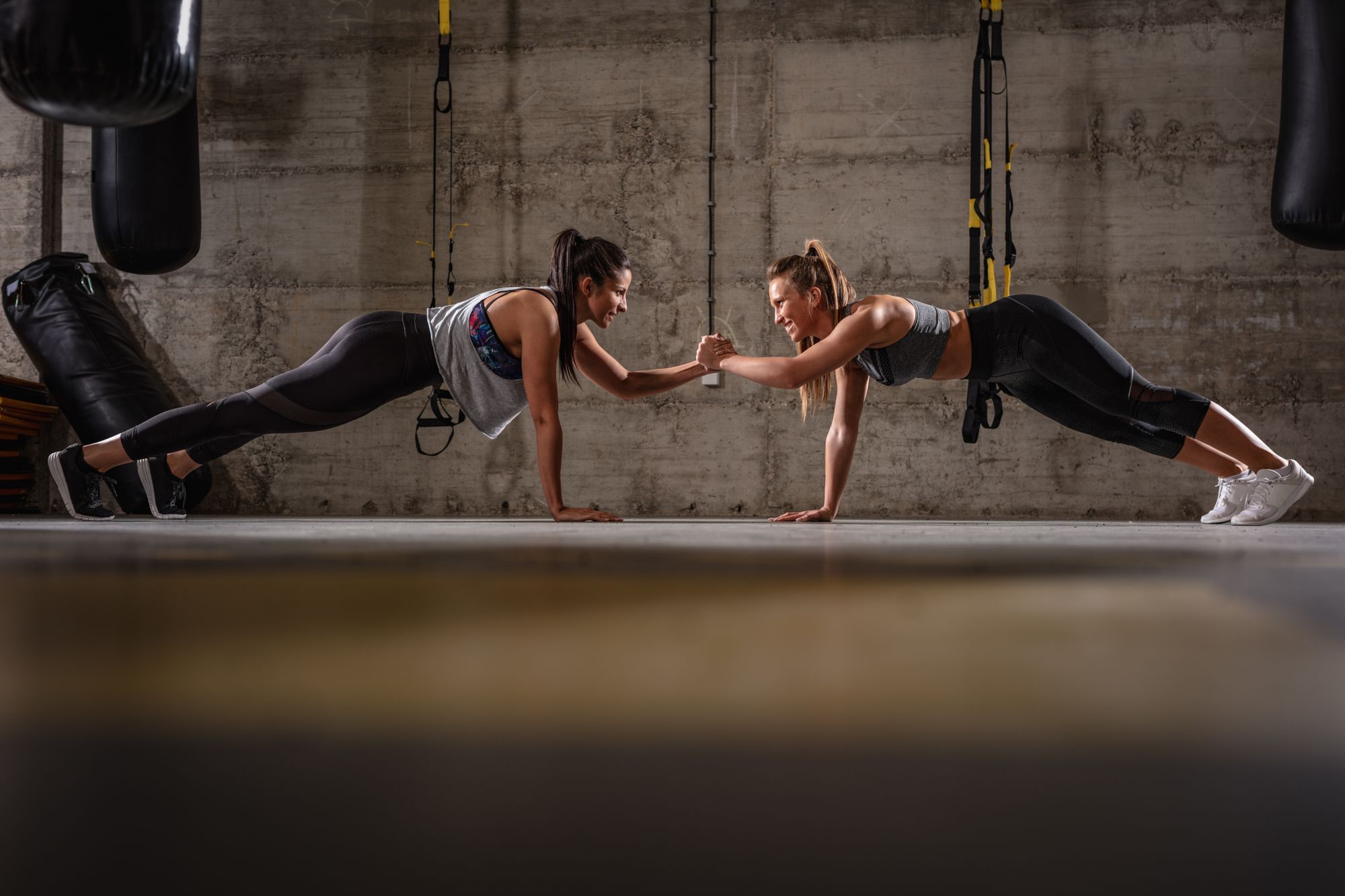Is More Range of Motion on Your Exercises Always Better?
More range of motion through your exercises is always better because it results in more gains. True or false? Find out for yourself here.

More range of motion (ROM) through your exercises = better because it results in more gains. True or false?
While we often dismiss partial-ROM training as pure “ego-lifting”, “lazy”, or perhaps even “useless”, recent research suggests that we’ve been too quick to judge.
Surprisingly, partial-ROM training may help you experience better growth than even training through a full range of motion—albeit with a few caveats.
In other words? Don’t go ending off your squats before reaching parallel to the ground (and expect the same gains) just yet. Read this article first.
What is range of motion?
To make sure we’re all on the same page, here’s the definition of “range of motion”: it refers to the degree to which a joint can be moved.
For example, if you’re seated with your shin perpendicular—and your thigh parallel—to the floor, that is 90 degrees of knee flexion. Note that a knee can typically be flexed (e.g., on the lying hamstring curl) to around 130 degrees and extended (e.g., on the leg extensions) to about 0 degrees.
Anything less, and it'll be (typically) counted as partial-ROM training.
Partial-ROM training could lead to better muscle growth (but …)
That’s right. Cutting your range of motion short on exercises could give you better results—and the following two studies provide proof:
- 2021 study published in the European Journal of Sport Science: Researchers randomly assigned 45 untrained women into five groups. One group trained through a full range of motion on knee extensions, one group only trained the bottom half ROM, one group trained only the top half, and one group alternated between the two partial ranges of motion. The last group (i.e., the fifth) served as a non-training control group. Guess what the researchers found after 12 weeks? The group training with variable partial ranges of motion experienced the largest strength gains compared with those trained through a full ROM.
- 2014 study published in The Journal of Strength & Conditioning Research: Researchers compared the effects of full squats versus a combination of full squats and half squats. In line with the later 2021 study, the group of participants that performed a combination of full squats and half squats tended to gain more strength than those exclusively training full squats.
Did you catch it? Okay, so we might have misled you a little.
If you're looking to maximize muscle growth, you still can't afford to neglect to go through a full range of motion on your exercises. Instead, you're going to have to alternate it with partial-ROM training.
An important note on partial-ROM training
And even then, there’s something important you must note about partial-ROM training: it doesn’t refer to those partials performed at relatively short muscle lengths (e.g., quarter or half squats, bench presses where your bar is at least six inches away from your chest, and leg presses where you’re barely moving the load).
Examples include:
- Bottom position of a squat
- Initial pulling motion on the deadlift (for the hamstrings)
- Bottom position on the bench press
If it makes things easier, you can think of this as the most challenging part of any lift.
So, what should your range of motion be on exercises?
Right. After all that discussion, here comes the most important bit.
How does all this affect your training—i.e., what should your range of motion look like on exercises?
In general, you're still going to do full-ROM training whenever possible.
Ultimately, it still has the most empirical support. That said, "full-ROM" training may not necessarily mean the same thing to you as to your lifting buddy. It depends on your mobility and, to some extent, body proportions.
Let’s say you could squat ass to grass but dropping down those last few inches requires substantial spinal flexion (because you’ve got a long torso relative to your legs).
In the long run, you may be better off cutting off your range of motion on squatting exercises right at (or just below) parallel to minimize injury risk—and thus possible time spent out of the gym.
Of course, you should also work on improving your mobility whenever possible:

Another example is if you experience joint pain with the triceps extensions. Here, you'd do best with cutting your range of motion to allow you to stay pain-free.
Then, with full-ROM training out of the way, you could work on incorporating some partial-ROM into the mix.
Here's where you cut out the "easy" part of a rep. That means you don't lock reps out all the way, essentially maintaining constant tension throughout.
For example, you can cut your range of motion just shy of locking in the following exercises:
- Bench press
- Triceps extension
- Shoulder press
- Squat
- Leg press
Takeaway
As you can now tell, individual range of motion—and, thus, form—on exercises could (and should) vary.
But it's important to note that there's still a general guideline for what's safe and effective. For that, you could refer to GymStreak’s exercise library, which comes complete with exercise demonstrations, so you can fine-tune your form to the best it can look.
Unlock Exercise Library
Download GymStreak & fine-tune your form today.
References
Bazyler, C. D., Sato, K., Wassinger, C. A., Lamont, H. S., & Stone, M. H. (2014). The efficacy of incorporating partial squats in maximal strength training. Journal of Strength and Conditioning Research, 28(11), 3024–3032. https://doi.org/10.1519/JSC.0000000000000465
Pedrosa, G. F., Lima, F. V., Schoenfeld, B. J., Lacerda, L. T., Simões, M. G., Pereira, M. R., Diniz, R. C. R., & Chagas, M. H. (2021). Partial range of motion training elicits favorable improvements in muscular adaptations when carried out at long muscle lengths. European Journal of Sport Science, 1–11. https://doi.org/10.1080/17461391.2021.1927199
Schoenfeld, B. J., & Grgic, J. (2020). Effects of range of motion on muscle development during resistance training interventions: A systematic review. SAGE Open Medicine, 8, 2050312120901559. https://doi.org/10.1177/2050312120901559


